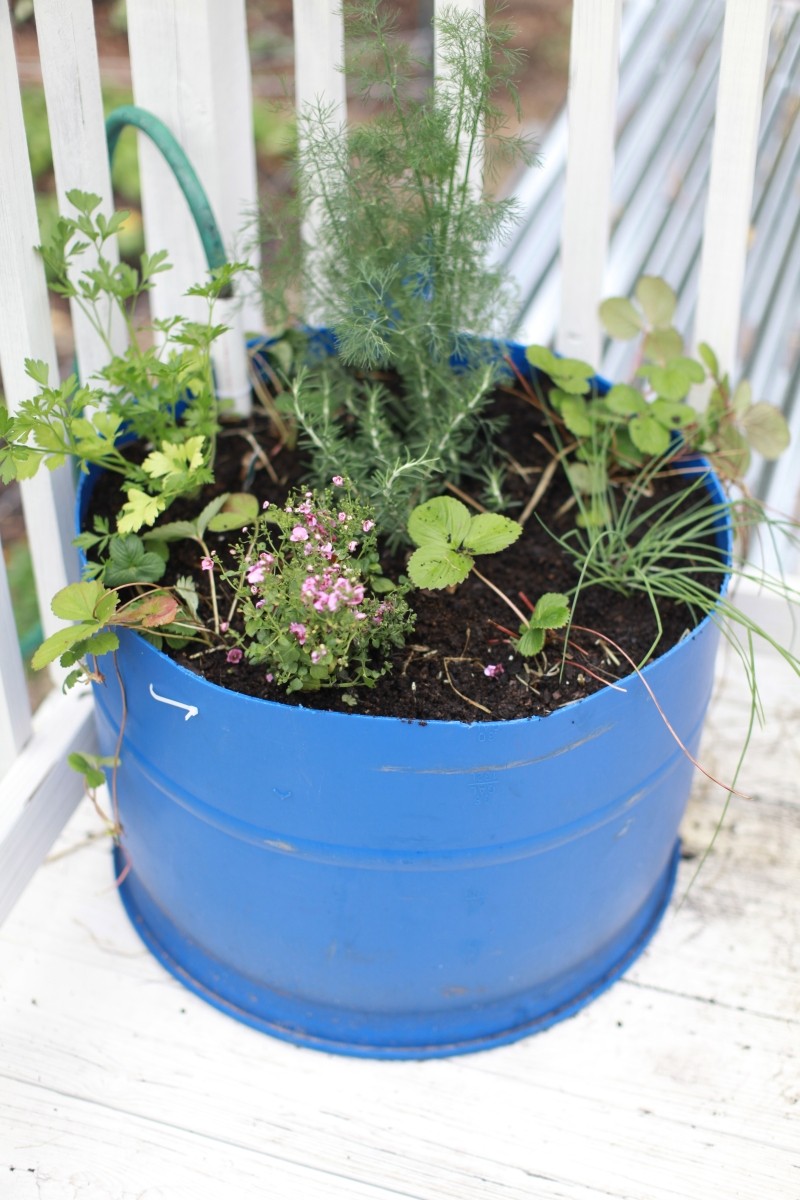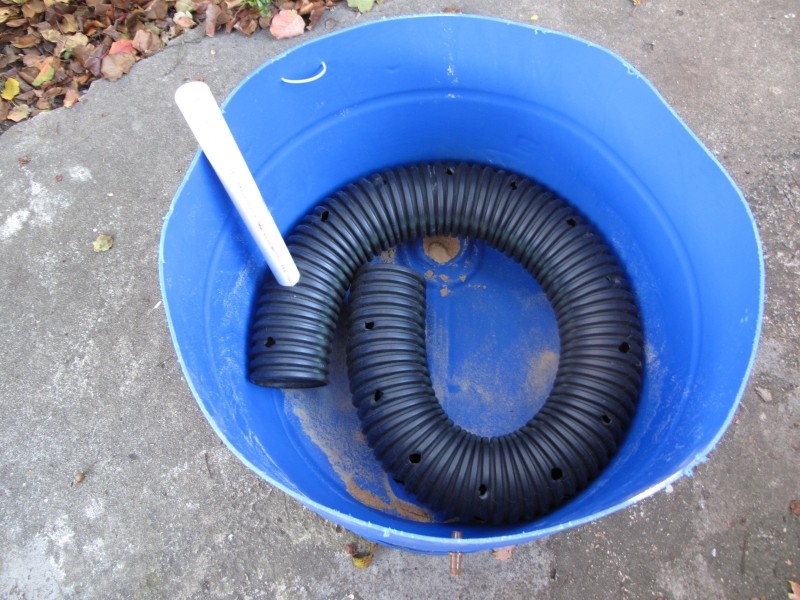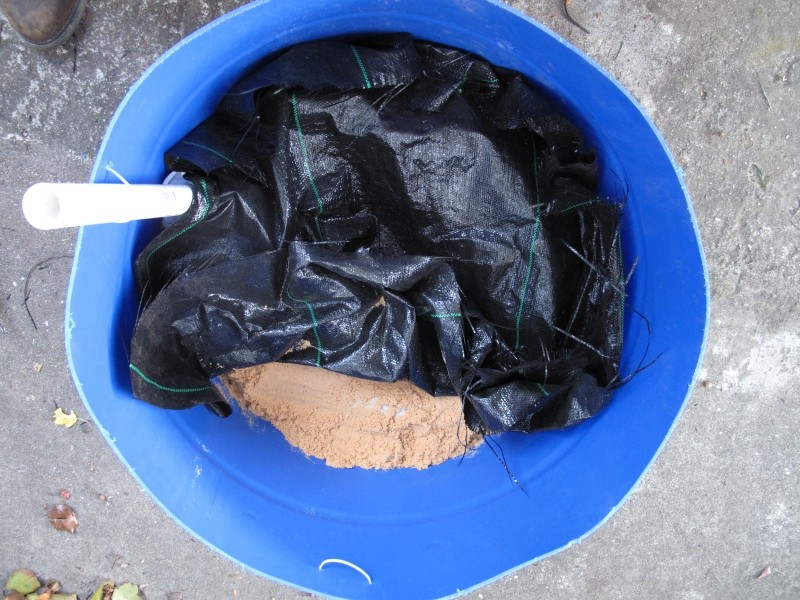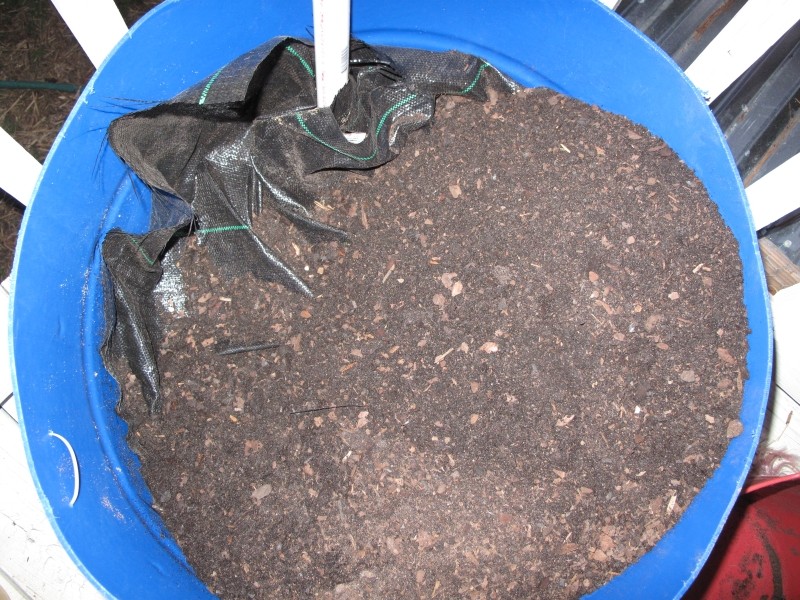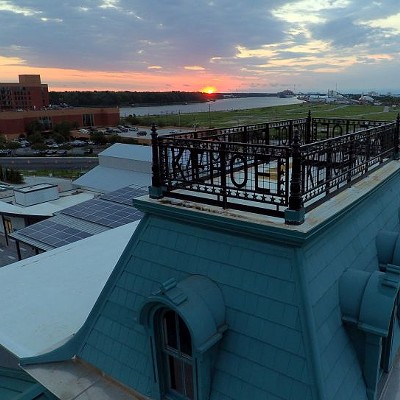VICTORY GARDENS is a proud collaborator with the Canyon Ranch Institute Savannah Partnership (CRISP). As a co-founding partner of Victory Gardens, I had the pleasure of showing a group of CRI Healthy Garden volunteers how to build a sub-irrigation planter, or what a lot of people call a "SIP." If you have limited space, you can follow my step-by-step guide for crafting your very own SIP.
A SIP will get more water to your plants while requiring less of your attention. A SIP looks like a regular container garden but has a large water reservoir at the bottom from which organic soil mix wicks moisture upwards from the bottom.
STEP 1 – The Container.
Obtain a 55-gallon plastic barrel. Check with food manufacturing businesses or look for them online, such as on Craigslist. Make sure that the barrel is food grade to ensure that no toxic materials have been stored inside it in the past. Typically, these barrels are sealed at the top, so one barrel can be used make two SIPs.
Using a measuring tape and marker, mark the halfway point with dots all around the barrel. Then, with a pliable straight edge, such as a ruler or wire, connect the dots and establish a cutting guide. For cutting, you will need a power drill, a ½-inch drill bit, and a jig saw.
First, drill a pilot hole centered on the line you drew around the barrel. With your pilot hole as a starting point, carefully cut along the line with the jig saw until your barrel is cut in half.
STEP 2 – The Water Reservoir.
Drill the drainage hole. This drain will remove any excess water that might gather during a rainstorm and will also let you know when your reservoir is full after watering. Using the ½-inch drill bit, drill a hole that is 12 inches from the top of the barrel planter. Everything below this drain will be water storage.
Next, insert a ½-inch drip irrigation barbed coupling into the drainage hole and wrap drainage pipe filter sock material around the side of the coupling that will be inside the container. Once it is tight, seal it with a plastic zip-tie. The filter mesh will keep the drain from clogging.
Now you will need a 5-foot-long section of 4-inch perforated pipe and a drainage pipe filter sock. Slide the sleeve over the pipe and zip-tie one of the ends shut. Insert the tied end first and coil the pipe inside the bottom of the barrel. Once it fits snugly on the bottom, use a razor blade to cut a 1-inch diameter hole on the top of the other end of the pipe,
Fit a section of 1-inch polyvinylchloride (PVC) pipe that is slightly taller than the height of the barrel inside the hole of the perforated pipe. Pull the filter sock tight and zip tie it so that the entire perforated pipe is enclosed by the sock. The sock should fit snugly around the PVC pipe.
STEP 3 – The Planter.
You’re now getting closer to planting! Fill the bottom of the planter with 1 ½ bags (½ cubic foot each) of play sand until the sand just covers the perforated pipe. Put in a little extra sand because some of the sand will settle when water is added. In order to keep the plant roots out of the water reservoir and to prevent the planting mix from clogging the water reservoir, place a piece of landscape fabric over the sand.
Fill the planter with organic planting mix, and you’re ready to plant your seedlings! Insert a hose into the ½-inch pipe and fill the water reservoir until it spills out of the overflow valve. For the first watering, you will also water from the top to dampen the soil because dry soil doesn’t wick water well.
ADDITIONAL TIPS:
SIP Shopping List. You can find most of the SIP materials for this project at your local hardware store. Shopping list: ½-inch drip irrigation barbed coupling; 7 feet of perforated pipe sleeve, 5 feet of 4-inch perforated pipe, zip-ties, 3 feet of 1-inch PVC pipe, one 4-foot by 4-foot piece of landscape fabric, two 1/2 cubic foot bags of play sand, and seedlings.
Soil Mix. Use a quality, organic planting mix from a local producer, such as Longwood Plantation. Victory Gardens offers this product in bulk.
Plants: For winter SIP gardens in Savannah, choose strawberries, rosemary, oregano, thyme, cilantro, collard greens, spinach, lettuce, arugula, kale, turnips, broccoli, or Brussels sprouts. You can find quality vegetable starts at the Victory Gardens greenhouse. Keep up with us on Facebook or at www.SavannahVictoryGardens.com.


